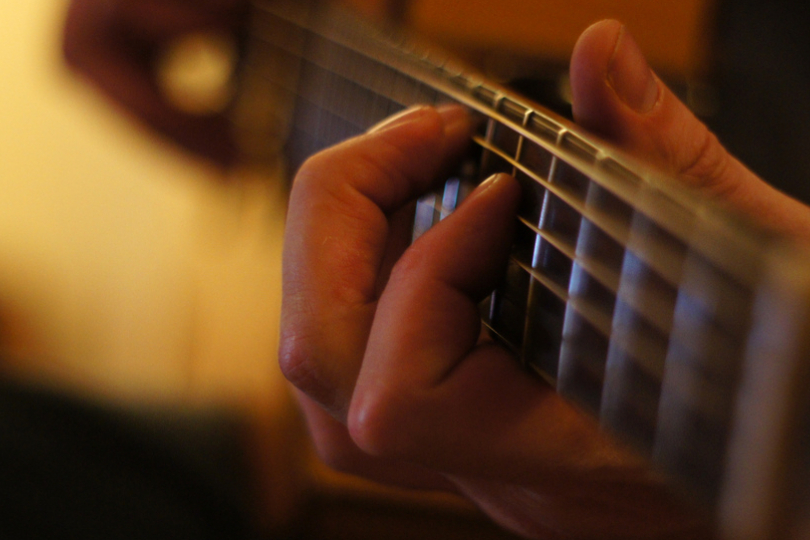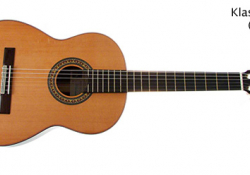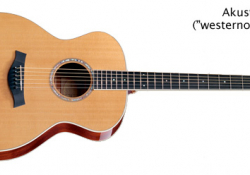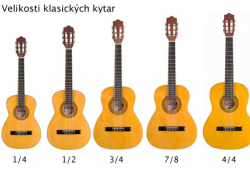
What’s Better: A Classical or an Acoustic Guitar?
“Hello, I would like to learn to play the guitar, can you recommend me one?” This phrase comes up quite a lot in musical instrument stores. Most beginner guitar players simply fancy learning to play, and are far from aware that there are an incredible number of types and kinds of instruments under the term "guitar." Broadly speaking, there are three basic types of guitar—classical, acoustic and electric. Let's leave aside the electric guitar, and focus on natural sounding instruments. So what's the difference between them? How does a classical guitar differ from an acoustic guitar, and what are the advantages of each type?
Let's start with the classical guitar, which, after all, originated a century earlier (for many people it was also called the Spanish guitar). The classical guitar was originally designed for classical music, but over the last 70 years it has expanded into many areas of popular music such as folk, country, jazz and more.
Classical guitars, unlike acoustic guitars, are mostly made in a uniform shape, with a wide fingerboard (about 53 mm) suitable for larger fingers, and with nylon strings, which are soft and do not cut the beginner's fingers as much as metal strings do. Plus, classical guitars come in five sizes to suit the age and disposition of the player, so you can already start playing classical guitar at the age of four. For the record, the sizes are given in fractions, so starting with the smallest guitar, it's 1/4, 1/2, 3/4, 7/8, and the "adult" 4/4. The classical guitar is suitable for beginners who have not played any stringed instrument before, and are learning their first fretting, fingering, and pick work.
Acoustic guitar (sometimes also called western or jumbo) is, simply put, a slightly higher level. The difference from a classical guitar lies firstly in the width of the fingerboard—usually 42 mm, one centimetre less than a classical guitar, and secondly in the equipment with metal strings, which have a stronger sound but are harder to pluck than nylon strings. It should be noted that this unpleasant characteristic can be partially eliminated by the use of weaker strings, which may sound less powerful but are more forgiving to the touch—these are metal strings marked 9 or 10 (the number indicates the thickness of the thinnest E1 string in hundredths of an inch). The acoustic guitar can be found in virtually every genre of music nowadays—pop, rock, jazz, swing, country, folk, etc.
Regarding the construction and shape of the acoustic guitar— due to the higher tension of the metal strings on the fingerboard, the soundboard is reinforced with cross ribs from underneath, and the strings themselves are not wound directly behind the fingerboard, but are wired through the fingerboard and soundboard with pegs. A handy feature for changing strings.
The shapes of the acoustic versus the classical guitar cater to every beginner—there is a choice of small guitars such as Parlor, Folk, Minijumbo, through the standard Dreadnought shape, to the largest guitars such as Jumbo, Grand Auditory, Grand Symphony, Grand Orchestra and Grand Concert. Another measure of a guitar's quality is the material from which it is made. Both types of guitars—acoustic and classical—can generally be said to be made of either plywood, semi-solid or solid wood. Plywood guitars are the cheapest, and have the advantage of a more or less consistent sound throughout their lifetime.
The next level is semi-solid, which are guitars also made of plywood, but with a soundboard made of one piece of solid wood, which greatly improves the sound quality—it is stronger, brighter and more sonorous. The highest level is solid body guitars, which are constructed with slabs of single-piece wood only—these guitars have the best and clearest sound of all three categories.
The type of wood from which the guitar is made is another important component that mainly determines its final sound. Commonly used woods include spruce, mahogany, rosewood, cedar, maple, oak, acacia, wild cherry, but also other good sounding exotic woods such as koa, bubinga, zebrawood, nato and others. The combination of these woods, where one kind is used for the soundboard, another for the sides and back, and yet another for the neck, results in guitars with a unique, multi-faceted and multi-colored sound.
A separate chapter are acoustic or classical guitars with a cutaway in the lower part of the body under the fingerboard, which allows solo guitarists better access to the last frets of the fingerboard. This cutaway is mostly found on guitars that are equipped with a pickup and an output to connect to an acoustic combo, for when playing to a larger audience or recording the guitar's sound. That's a bit beyond a beginner's ken, but in any case, there's nothing stopping you from learning on this type of guitar.
So which guitar to start on? Let's review the basic differences: a classical guitar has a wide fingerboard, softer nylon strings, a weaker sound, and all models in the five sizes are the same shape. An acoustic guitar has a narrow fingerboard, tougher metal strings, a stronger sound, and there are several sizes and shapes to choose from. So it is entirely up to the novice player to decide what type of guitar to choose for his or her first encounter with the world of music. There are many options, and fortunately, there isn't only one correct choice...
Was this article helpful to you? Let us know in the comments below.
If you have found an error or typo in the article, please let us know by e-mail info@insounder.org.







